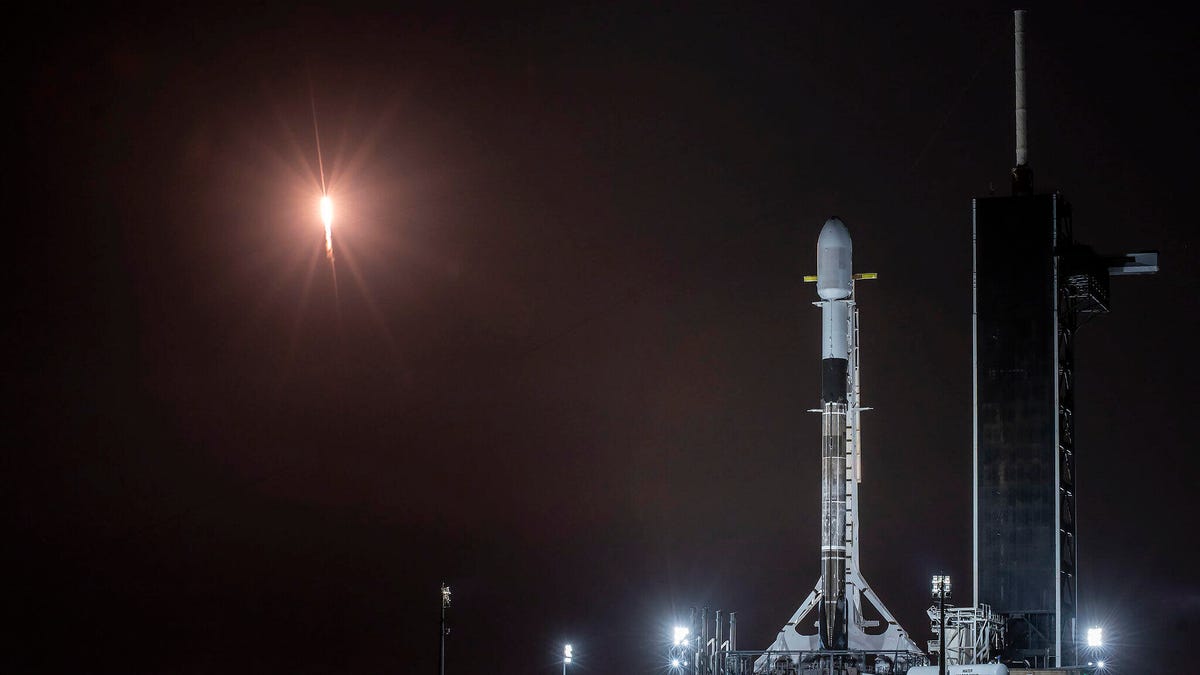SpaceX Falcon 9 missed its landing last month because of a hole in a boot
The booster appeared to miss the landing pad of the company's droneship in the Atlantic on Feb. 15.

A Falcon 9 loaded with Starlink satellites prepares for launch.
After successfully sending another batch of its Starlink broadband satellites into orbit Feb. 15 from Florida's Cape Canaveral Space Force Station, SpaceX missed the landing of its Falcon 9 first-stage booster for the first time in a year.
SpaceX's Benji Reed said Monday in a NASA press conference that a hole in an engine boot directed hot gas "where it wasn't supposed to be," triggering an automatic shutdown and leaving the booster without enough thrust to hit its landing on a droneship.
On the livestream of the mission, a flash can be seen just to the side of the droneship at the moment the booster should be landing, though no rocket ever enters the frame.
Reed said the unintentional splash-landing was caused by a holey boot that had been used on several other flights and its fate provides valuable data on the lifespan of similar components.
The landing miss appears to have spared three seagulls that were hanging out on the landing pad and may never understand how close they came to being barbecued.
The Falcon 9 itself had a decent life, completing six launches successfully, but only five landings in its career.
The apparent hard water landing comes almost exactly a year after the same thing happened at the end of an earlier Starlink mission on Feb. 17, 2020. Every landing attempt in between has been successful -- for Falcon 9, that is. (Definitely not counting Starship testing in Texas.)
These launches and the droneship landings that follow them are becoming pretty routine for SpaceX, despite last month's mishap, but Musk would like to see the pace of launches increase. The permit from the FCC for Starlink to operate requires that at least 2,212 of its satellites be operational by March of next year.
The only sign something went wrong? A bright glow and some startled gulls.
So far, over 1,000 of the small satellites have been sent to space, but it's not clear how many of those are currently operational. Regardless, it would seem that if SpaceX can pull off at least two Starlink launches per month, it should be able to hit its target.
Four Starlink missions have now been flown thus far in 2021. The next launch is now set for Tuesday evening.
Follow CNET's 2021 Space Calendar to stay up to date with all the latest space news this year. You can even add it to your own Google Calendar.

